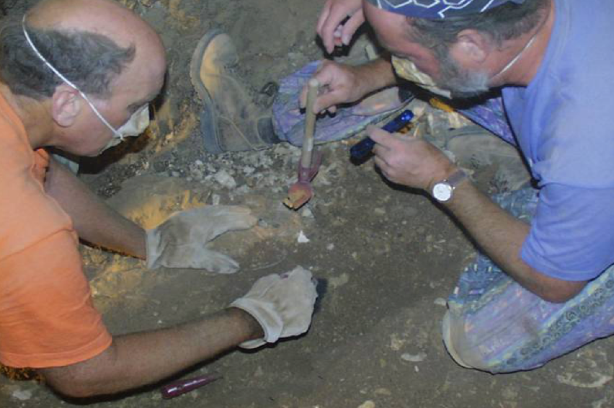Eau Claire professor helps unearth ancient link to modern Jerusalem
Cave becomes last communication of the ancient Jewish people
More stories from Austin Wagner
Photo by SUBMITTED
Imagine this: you’ve just lost everyone you know to an attack from Roman soldiers, you are no longer allowed within your home country, and you’re now stuck in the middle of the desert with a handful of other refugees.
As sad as this scenario sounds, it has already happened.
Somewhere around the year 130, a man named Simon bar Kokhba unified the Jewish people under one banner to try and fight the Roman Empire. The rebellion ended with over 200,000 Judeans killed in battle, and around 200,000 more dying from famine and razing of towns.
Essentially, there was nothing left of Judea. Jews were banned from Jerusalem and their religion was harshly suppressed by the Romans.
In the aftermath, survivors wandered the desert looking for safety and found a place of refuge, now known as the Cave of Letters.
1,869 years later, UW-Eau Claire professor Dr. Harry Jol, a team of fellow scientists and a NOVA film crew ventured into the cave.
Even though other researchers explored the Cave of Letters in the 1950s, Jol said some questions were left unanswered.
“Who were these people living in this cave?” Jol said. “Who were they before the attack?”
The team of scientists made some discoveries to help answer this question.
These discoveries include bones to help see if there were any differences in biological structure in humans then and now, kitchens inside the cave, clothing, and documentation showing some insight on the way legal proceedings were dealt with in that time period.
Jol said the Cave of Letters was more than just an important archaeological find – it holds great significance to the Jewish people.
“It’s the link from ancient Judea to present-day Jerusalem,” Jol said. “This is where the last of Judea lived in safety, securing the future of the Jewish people.”
One of the tools used to explore the cave was ground-penetrating radar. The technology projects radio waves into the earth and maps the terrain based on the density of objects underground.
Former Eau Claire student and computer science major Chris Morten helped Jol develop the mapping tools and databases they used for the excavation. Chris’ software is still being used today.
Jol said the Cave of Letters allowed the team to do more than unearth ancient secrets and give a student the opportunity of a lifetime.
“The project showed we can work in teams and utilize different tools to solve cultural problems together” Jol said. “We can solve the problems we have across faith using technology and science.”

